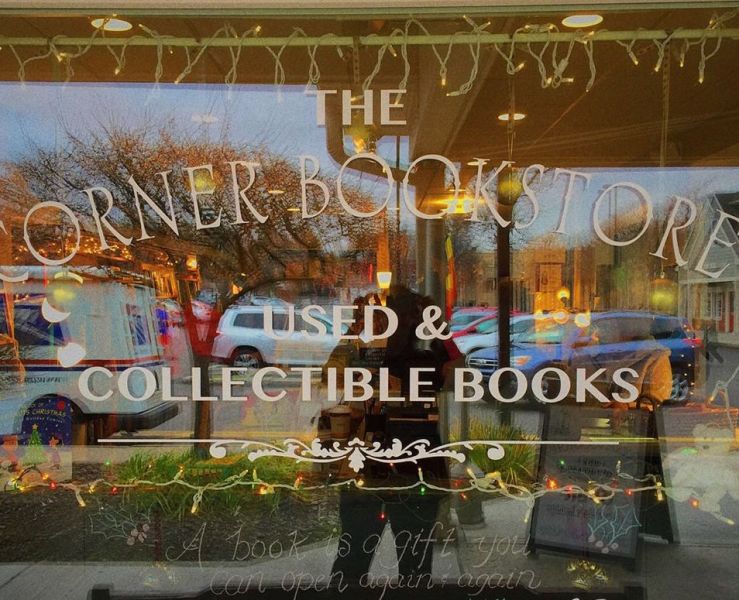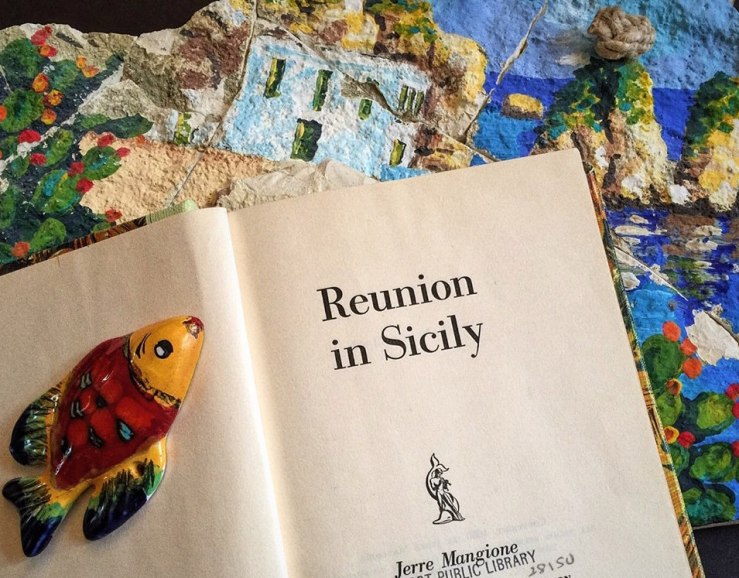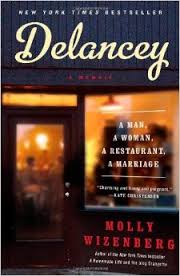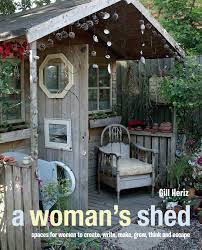
“Food for Mama was equal to love, and, though she might withhold it when fasting, she usually meted it out to Papa and me straight from her heart. The preparing, cooking, and storing of food made up the pulse of her days. I’d wake in the mornings to the sound of Mama grinding grain. Clamped to the kitchen counter, that steel mill from Hatch’s was her magic tool, transforming inedible whole grains into vital ingredients as she stood beside it, hair pulled back, working the crank. The groats went in a funnel in the top, to be ground by opposing metal wheels attached to the crank, and depending on the setting, meal or flour streamed or puffed from the spout into a bowl.” This Life Is in Your Hands, by Melissa Coleman
Melissa Coleman’s parents were key figures in the back-to-the-land movement of the 1960s and 1970s, disciples and neighbors of Helen and Scott Nearing, who were activists and advocates of simple living. Scott Nearing wrote the classic Living the Good Life: How to Live Sanely and Simply in a Troubled World in 1954.
Coleman’s memoir, This Life Is in Your Hands, is about her childhood years with her two younger sisters on the Maine farmland her parents, Sue and Eliot Coleman, bought from the Nearings. It’s an ode to people in love with the land and a certain way of life; it’s also an elegy for a family and a time forever lost: when Melissa was seven, tragedy struck and her family splintered.
As I read the memoir, it dawned on me that I recognized the name Eliot Coleman, and that, in fact, I have one of his books, Four-Season Harvest, which I bought when I became interested in year-round gardening. From the standpoint of American history, This Life Is in Your Hands is a fascinating look at the back-to-the-land movement. Regarded suspiciously as radical hippies by many in mainstream America, the Colemans and others like them pioneered an important movement flourishing on new fronts today.
Eliot Coleman criticized the ravages wrought by industrialized farming. He advocated small-scale, biological farming, which emphasizes high quality soil that eliminates the need for pesticides, and a return to ancient farming practices. When Melissa Coleman was a young child, Eliot went on research forays to Europe, where he observed French farmers cultivating gardens all year round. He began to import their age-old farming wisdom to America and has been influential in the organic farming movement ever since.
There is much to admire in This Life Is in Your Hands as a memoir, and there are limitations, too. Melissa Coleman’s writing is uneven, and her storytelling skills fall short in some readers eyes. But at her best she is exquisitely poetic about daily life on their plot of land.
“The cookstove was our most important possession, without which we would either starve or freeze to death. To my young imagination it looked like a black animal with four stout legs under a square body, a flat top with lids that opened to the fire, and one long tail of a chimney that curved through the wall to puff smoke outside. It had three mouths, a small one to make little fires for cooking, a bigger one for overnight fires, and the biggest of all for the oven, with white enamel around a temperature dial ranging from “cool” to “very hot” and the brand name, “Kalamazoo.” When the bread was done, Mama opened the oven door and the loaves came out golden brown and steaming, to be placed on the counter to cool.”
Of course, Melissa must also tell how this edenic existence fell apart. The lifestyle entailed constant, backbreaking work, and the Colemans did not have electricity or indoor plumbing. The children were allowed to run free on the farm, and the constant work meant they weren’t attended to closely, which contributed to a tragedy: the accidental death of Melissa’s sister.
Coleman’s portrayal of her parents, Sue and Eliot, is mostly compassionate, but confusing, to me. From the beginning it’s drummed into us that Sue didn’t have the inner confidence and drive of her husband, Eliot. We’re told he was extraordinary, while Sue is depicted as lacking, and some of this judgement seems unfair to Sue. Understandably, Melissa suffered greatly when Sue fell apart and abandoned her role as a mother after the tragedy. But for a long time their farm and family flourished thanks to Sue’s efforts, not just Eliot’s. She gardened, cooked, cleaned, preserved food, hauled water, and gave birth to two of her children at home–one of those times she was home alone.
Sue suffered from bouts of depression and postpartum depression, but she was caring for three young children while adhering to superhuman lifestyle standards and married to an impossibly driven man. At one point, before the tragedy, Eliot procured a rental car and told Sue to leave with the children, that the marriage was over. It’s not clear to me why this was warranted–Sue’s worst sin seems to be what some might call neediness–unless Melissa left information out to protect her mother. I found Eliot’s actions harsh. The situation hints at sexism and unrecognized mental illness. Despite the sexual revolution and women’s lib, there were plenty of sexist marriages in the 1960s and 1970s. Like any young mother in her situation, Sue needed more support, although as readers, we may not know the whole story.
The Nearings apparently remained somewhat aloof after the tragedy. Helen Nearing, in fact, had not been pleased when Sue became pregnant the first time, telling her she should have waited because it was unrealistic to take on both motherhood and the farm.
The author’s conclusions about the meaning and fallout from her family’s grand experiment and tragedy struck me as pat. But telling the whole, accurate truth in these fraught family stories, from the point of view of the child and then as an adult with hindsight, is difficult. Memoir has pitfalls, but I think this one is an important and intriguing story on many levels.
Eliot and his third wife, Barbara Damrosch, currently own and operate Four Season Farm in Harborside, Maine, on the site of the original farm Melissa wrote about in her memoir. Today, many small organic farmers are flourishing in central Maine, some owned by apprentices who worked for the Nearings and the Colemans.
“Our staple was a yeast-free flatbread called a chapati, which Mama learned to make from David Hatch, who learned in India. Mama let me help mix the flour from the grain mill with water and salt to make a pliable dough, then kneaded it to bring out the gluten and let it set for an hour before making round gold balls of dough that she flattened with a rolling pin into thin, but not too thin, pancakes. She prepared the cookstove ahead so there was a bed of red hot coals in the firebox, and heated a greaseless twelve-by-sixteen-inch cast-iron skillet to sear both sides of the chapati and trap the steam inside. The chapati was then placed on a bent clothes hanger over hot coals inside the firebox, where it would blow up into a steamy balloon. Once it was removed from the flame, the air in the middle was released and the balloon flattened to form a perfect tortilla-like vehicle, warm or cold, for whatever you chose to put on or inside it.”
Here is a short video about Helen and Scott Nearing; Eliot Coleman appears in the opening:
Have you read This Life Is in Your Hands or other books about sustainable living?

 By the way, Ann just released her new novel,
By the way, Ann just released her new novel,  Read a collection of essays:
Read a collection of essays:  Read a dystopian or post-apocalyptic novel:
Read a dystopian or post-apocalyptic novel:  Read a book over 500 pages long:
Read a book over 500 pages long:  Read a book of historical fiction set before 1900:
Read a book of historical fiction set before 1900:  Read a book about politics, in your country or another (fiction or nonfiction):
Read a book about politics, in your country or another (fiction or nonfiction): 




































